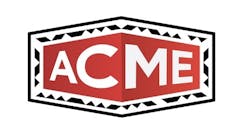Like the QR codes used to access websites, augmented reality (AR) has its own code marks used to launch augmented reality applications. Unlike QR codes, which have a standard format and appearance, augmented reality codes can now be customized with the release of VuMark. (The pictures accompanying this article show how varied VuMarks can be in appearance; code data that launches the AR applications are housed in the borders of the graphics.)
VuMark is a customizable visual code that enables AR experiences to be attached to any product or object. It is available from PTC as part of Vuforia 6—a platform for AR development. According to PTC, the VuMark customizable visual code can be placed on any product or machine—either manually using a decal or automatically printed during the manufacturing process. Just as a QR Code indicates to a user that more information is available by scanning the code, a VuMark is intended to visually indicate that an AR experience is available, such as step-by-step instructions for assembly, use, repair or inspection.
That’s why this is important to industry. The increasing numbers of experienced workers retiring from industry, coupled with the difficulty of finding new, skilled workers, has placed industrial companies of all types in a bind when it comes to keeping operations up and running. AR can put step-by-step instructions for maintenance and repair into the hands of workers who don't have years of experience under their belts. Plus, AR visually highlights not only the machine components requiring repair, but illustrates how to properly remove, disassemble, repair and replace them.
The customizability of VuMarks is a significant development. The VuMark Designer application enables Adobe Illustrator users to create VuMarks from existing graphics and brand assets, such as logos. This means that users can create visually appealing VuMarks that also encode any type of data needed for accessing an AR experience.
The two videos from PTC below highlight how Sysmex Corporation and KTM Motorcycles are using AR and VuMarks to enable field service personnel to standardize their repair and maintenance workflows.
Sysmex Corp.
KTM Motorcycles


